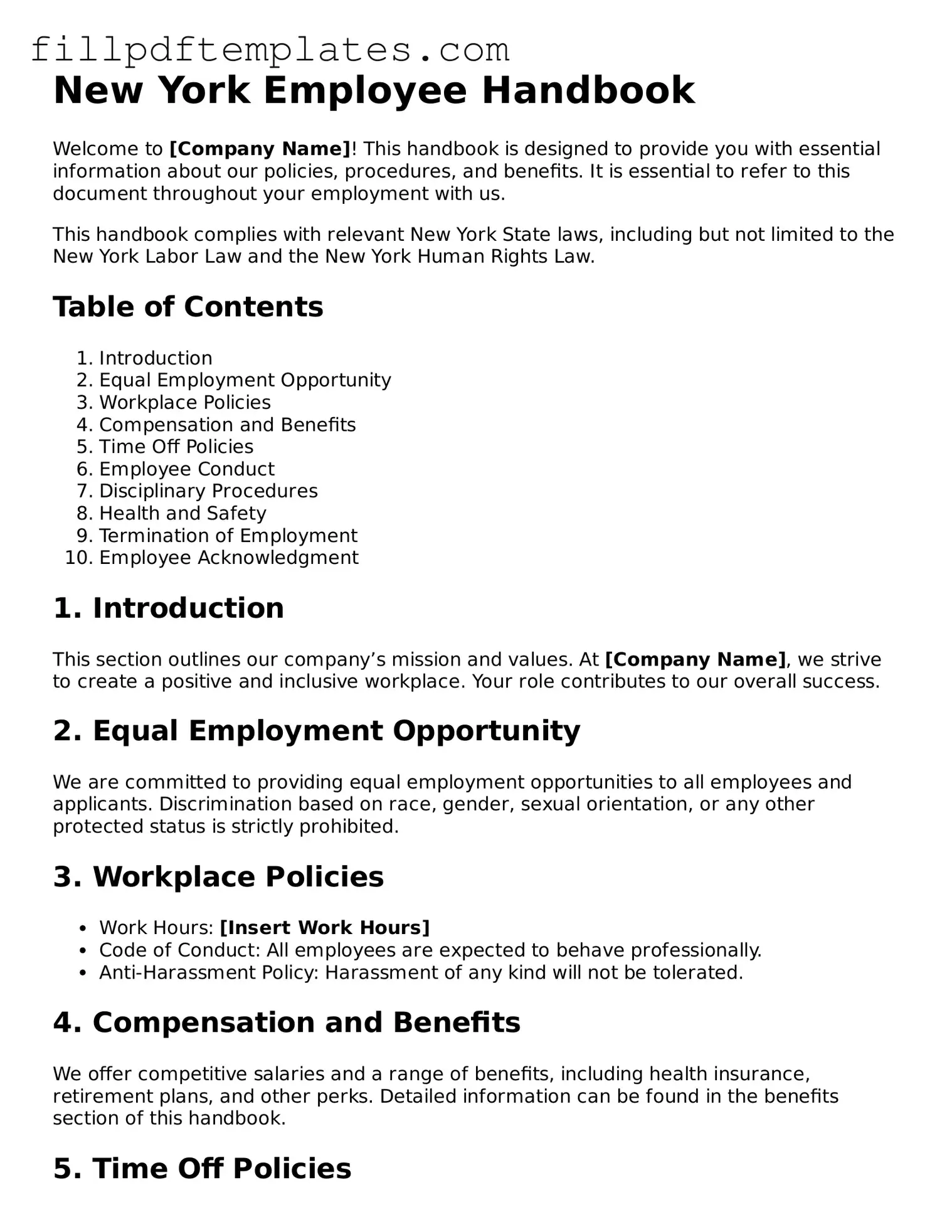New York Employee Handbook
Welcome to [Company Name]! This handbook is designed to provide you with essential information about our policies, procedures, and benefits. It is essential to refer to this document throughout your employment with us.
This handbook complies with relevant New York State laws, including but not limited to the New York Labor Law and the New York Human Rights Law.
Table of Contents
- Introduction
- Equal Employment Opportunity
- Workplace Policies
- Compensation and Benefits
- Time Off Policies
- Employee Conduct
- Disciplinary Procedures
- Health and Safety
- Termination of Employment
- Employee Acknowledgment
1. Introduction
This section outlines our company’s mission and values. At [Company Name], we strive to create a positive and inclusive workplace. Your role contributes to our overall success.
2. Equal Employment Opportunity
We are committed to providing equal employment opportunities to all employees and applicants. Discrimination based on race, gender, sexual orientation, or any other protected status is strictly prohibited.
3. Workplace Policies
- Work Hours: [Insert Work Hours]
- Code of Conduct: All employees are expected to behave professionally.
- Anti-Harassment Policy: Harassment of any kind will not be tolerated.
4. Compensation and Benefits
We offer competitive salaries and a range of benefits, including health insurance, retirement plans, and other perks. Detailed information can be found in the benefits section of this handbook.
5. Time Off Policies
- Vacation Time: Employees are eligible for [Insert Vacation Policy].
- Sick Leave: All employees are entitled to [Insert Sick Leave Policy].
- Family Leave: In compliance with state law, family leave policies are outlined here: [Insert Family Leave Info].
6. Employee Conduct
Employees are expected to maintain the highest standards of conduct. This includes treating colleagues with respect and adhering to company policies. Violations may lead to disciplinary action.
7. Disciplinary Procedures
In the event of a policy violation, the following steps will be taken:
- Verbal warning
- Written warning
- Possible termination
8. Health and Safety
Your safety is a top priority. Please report any unsafe conditions or incidents to your supervisor immediately. All employees should familiarize themselves with our emergency procedures.
9. Termination of Employment
Termination can occur voluntarily or involuntarily. Employees are encouraged to provide notice of resignation at least [Insert Notice Period] in advance.
10. Employee Acknowledgment
By signing below, you acknowledge that you have received a copy of this handbook and understand its contents.
Employee Name: ________________________
Date: ________________________
Thank you for being a part of [Company Name]. We look forward to working with you!
